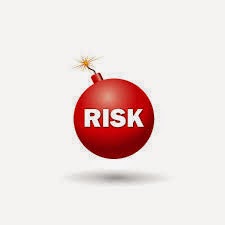PROJECT WORK EXPERIENCE FOR PMP APPLICATION
1.
CALCULATING HOURS
PMI
wants 4500
hours of project work experience
if
you have a bachelor's degree.
That is 35
hours a week (7 hrs a day )
so
one year duration means 1680 hours (assuming 20 working days in a month)
i.e.
140 hours per month
note 2. If you do not have a bachelor's degree, the requirement is 7500 hrs of experience and so you have to add those many numbers of projects to complete the requirements.
note 3: PMI says it has to be Unique, Non overlapping projects. Please do not get confused by the words. It just means that if you were working on two projects at the same time you can pick only one. Not the both. So those hours can be picked only once and not twice while calculating the hours.
to
complete 4500 hours you need 32 months of project work experience around
(and
i think we should always keep it little more)
So
Three years are ok (with a Bachelor's degree)
PMI
need projects not more then 8 years old…
now
its up to you. You can have four projects or 3 or may be just one to
show these many months of project work
2.
DISTRIBTING HOURS AS PER PMI REQUIREMENT
Now
the PMI requires that you further break down these hours in these
five process groups
Initiation
13 %
Planning
24 %
Executing
30 %
Monitoring
and Controlling 25 %
Closing
8 %
Look
at the table below and it will look like a piece of cake to you :)
Project
|
From
|
To
|
Months
|
Hrs
|
Initiation
13%
|
Planning
24%
|
Exe
30%
|
M
&C
25%
|
Closing
8%
|
| Setting up a LAN | Jun 2013 | Feb 2014 | 8 | 1120 | 145 | 270 | 336 | 280 | 89 |
you have to do the same for all the projects you are mentioning, till you reach the required number of hours
SO NOW HERE IT IS, THE SUMMARY, WHAT YOU HAVE TO DO
Project
1
1. Title
2. Brief
Description
3. Time
Period from ----- to -----
4. Total
hours
5. Divide
initiation
13 %
planning
24 %
executing
30 %
monitoring
and controlling 25 %
closing
8 %
6. Reference
name for this project
7. Reference
e mail id for this project
8. Reference
Phone number for this project
KEEP ADDING PROJECTS TILL YOU REACH THE REQUIRED NUMBER OF HOURS
note 1. you can give the same reference name for more then one project.
note 2. stick to the PMI requirements even if you have worked in many projects.
note 3 . there is no good or bad project.
note 4. talk to your references well in advance. tell them what they have to do if your application falls in audit. (see my post of august on "what to do if your application fall in audit for more information on the same")
Thats it !!!
Please feel free to ask questions or a detailed explanation of any topic. Let me know if you want me to add any topic and if anything you find wrong. Please leave a comment if you find it useful
KEEP ADDING PROJECTS TILL YOU REACH THE REQUIRED NUMBER OF HOURS
note 1. you can give the same reference name for more then one project.
note 2. stick to the PMI requirements even if you have worked in many projects.
note 3 . there is no good or bad project.
note 4. talk to your references well in advance. tell them what they have to do if your application falls in audit. (see my post of august on "what to do if your application fall in audit for more information on the same")
Thats it !!!
Please feel free to ask questions or a detailed explanation of any topic. Let me know if you want me to add any topic and if anything you find wrong. Please leave a comment if you find it useful

.jpeg)







